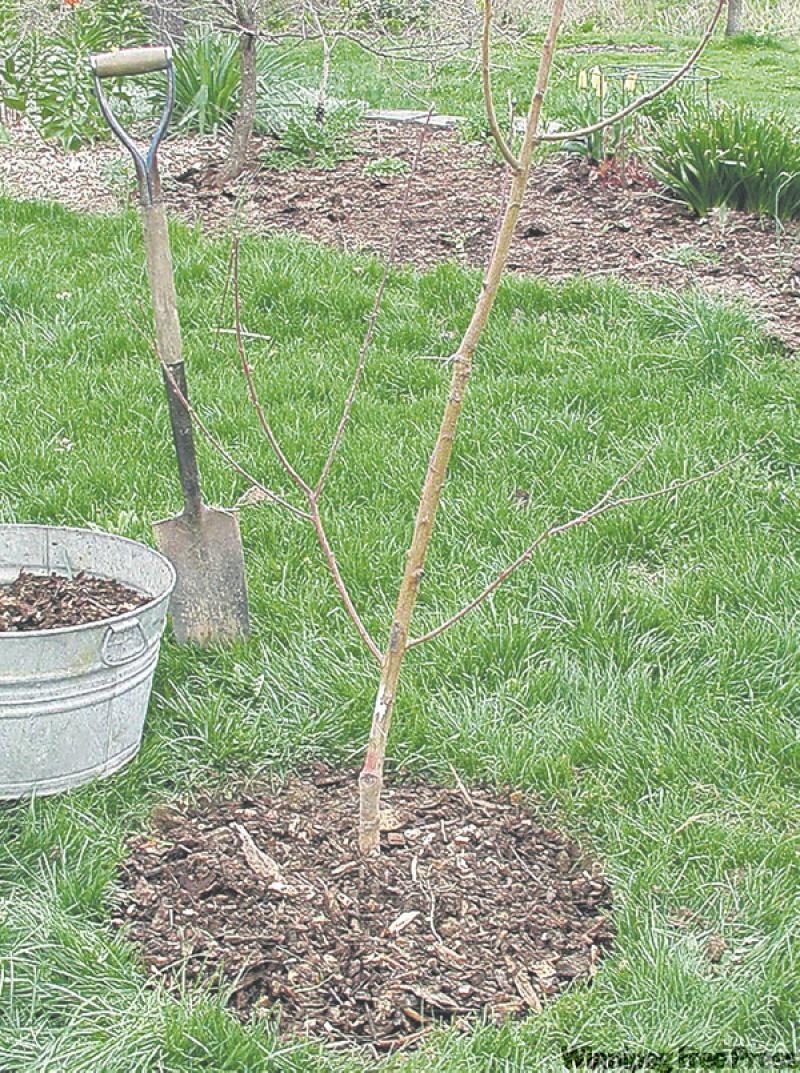
I'm constantly amazed by the resilience of trees, even in the face of intentional mutilation and poor care. But if you want to put a quick end to that small tree you just bought, here are some ways to turn it into firewood in short order.
* The road home. You can begin stressing out the tree even before you get it home, by transporting it uncovered, at highway speeds in the back of a truck or strapped to the top of the car. Valuable moisture will be wicked rapidly from the leaves and if you do a really good job, the hapless leaves may also become shredded.
* Putting it in the ground. One of the fastest ways to kill a tree is to plant it really deeply. The deeper the better, although surprisingly, it doesn't take much extra depth to seriously stress a tree. I have seen more trees less than five years old killed this way than by any other means. Tree roots do more than just anchor the tree and suck up water. Roots need oxygen; that's why they are naturally quite shallow.
If you have already planted your tree at the correct depth -- so that the root flare meets the trunk right at ground level -- you can still do in your tree by smothering it in mulch. Trees like about five to 10 centimetres of loose mulch, but if you pile it on a foot or more, your tree will be gasping for breath in no time.
You may have heard that mulch can introduce fungal rot to a healthy tree, but this generally isn't true. But you can increase the odds of rot setting in by snuggling mulch deeply around the tree's trunk.
* To water, or not. Endlessly soaking tree roots so that they sit in a pool of water is a nice complement to deep planting, because this also deprives roots of valuable oxygen. If your natural drainage is excellent, you may not be able to kill your tree by over-watering it. In this case, withhold water. It's not as effective as drowning, but it can take its toll.
* Putting on a stranglehold. Your new tree may need to be staked and there are techniques that are gentle on tender young bark. But you can effectively strangle your hapless new charge by binding the young trunk tightly to a stake, preferably with thin wire and leaving the binding in place for more than a growing season.
All of the life-giving vessels that transport nutrients and water lie in a thin zone called the cambium, which is right under the bark. Each year the tree adds width, and so the cambium must expand outward with growth. A good noose can cut off this life-giving cambium decisively.
* Making up the bed. Many trees put up with living in the lawn, even though they would rather have their own root room in which the turf has been cut away right up to the drip-line of the tree's canopy. However, if you cover the soil in turf right up to the trunk, there is always the opportunity to do a number on the trunk with a well-aimed weedwhacker. The whipping line of the whacker cuts through life-sustaining cambium even faster than the strangulation method.
Admittedly, it usually takes a few years to do a tree in with a combination of these techniques. This is because trees carry significant stored energy within their trunk, limbs and roots.
Of course, you could kill it right away just by cutting it down with a chainsaw, but bringing home a tree just to immediately cut it down seems a little extreme.
Nora Bryan is a garden consultant and certified arborist. She can be reached at nora--bcanada.com and through her Garden Buzz blog at calgaryherald.com/life.
-- Canwest News Service



